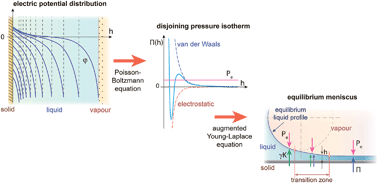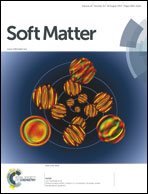Modeling the effect of surface forces on the equilibrium liquid profile of a capillary meniscus
Abstract
The equilibrium profile of a capillary meniscus formed under combined action of disjoining/conjoining and capillarity pressures is investigated. Attention is focused on the shape of a transition zone between a spherical meniscus and a thin liquid film in front of the meniscus. The Poisson–Boltzmann equation is used for calculations of electrostatic contribution to the disjoining/conjoining pressure and the liquid shape inside the transition zone. Both complete and partial wetting conditions are investigated.


 Please wait while we load your content...
Please wait while we load your content...